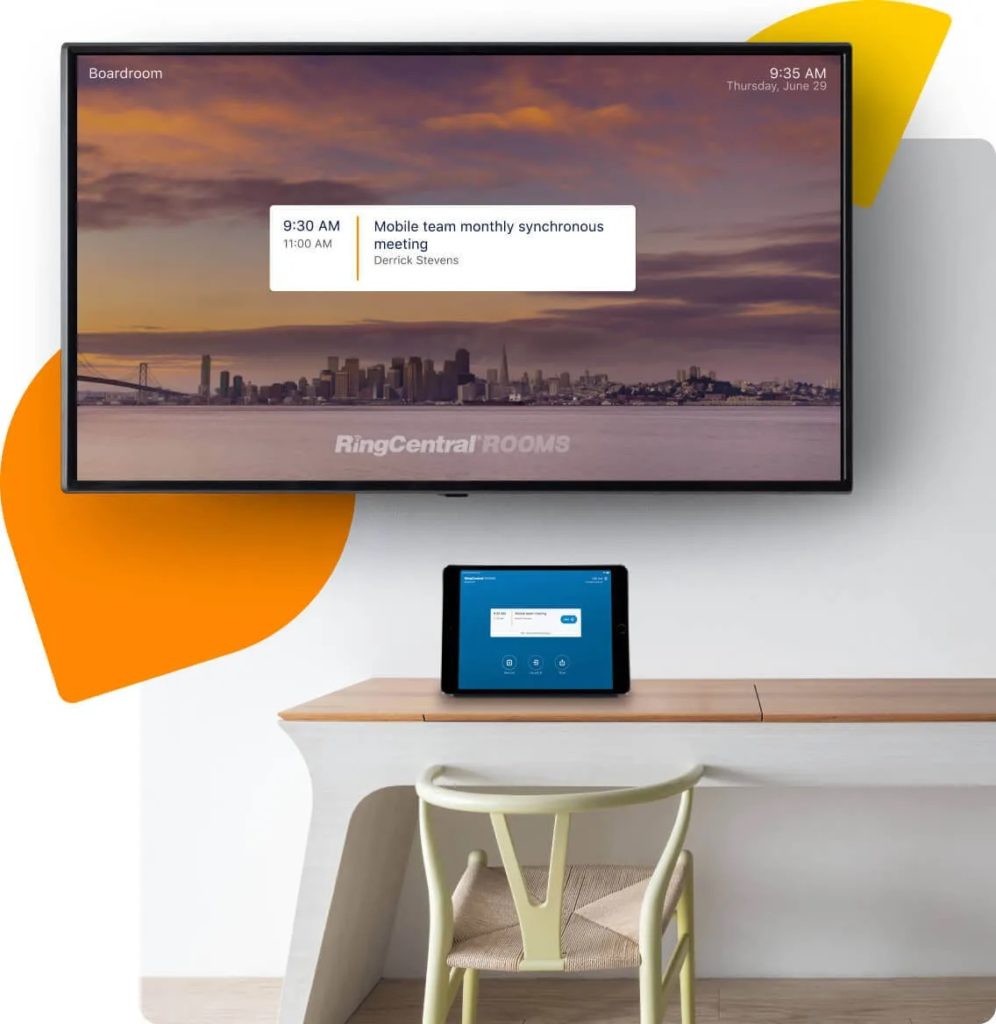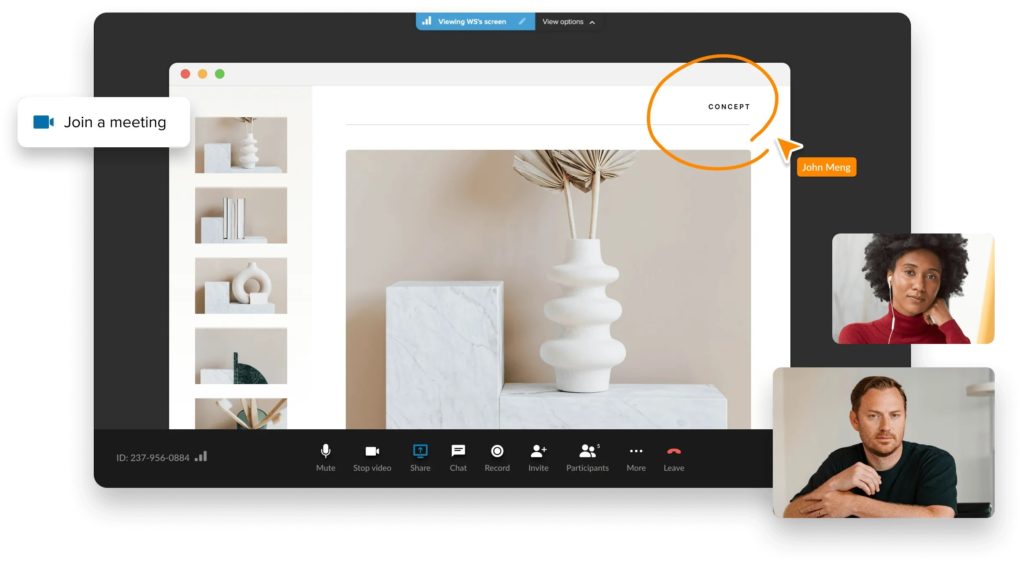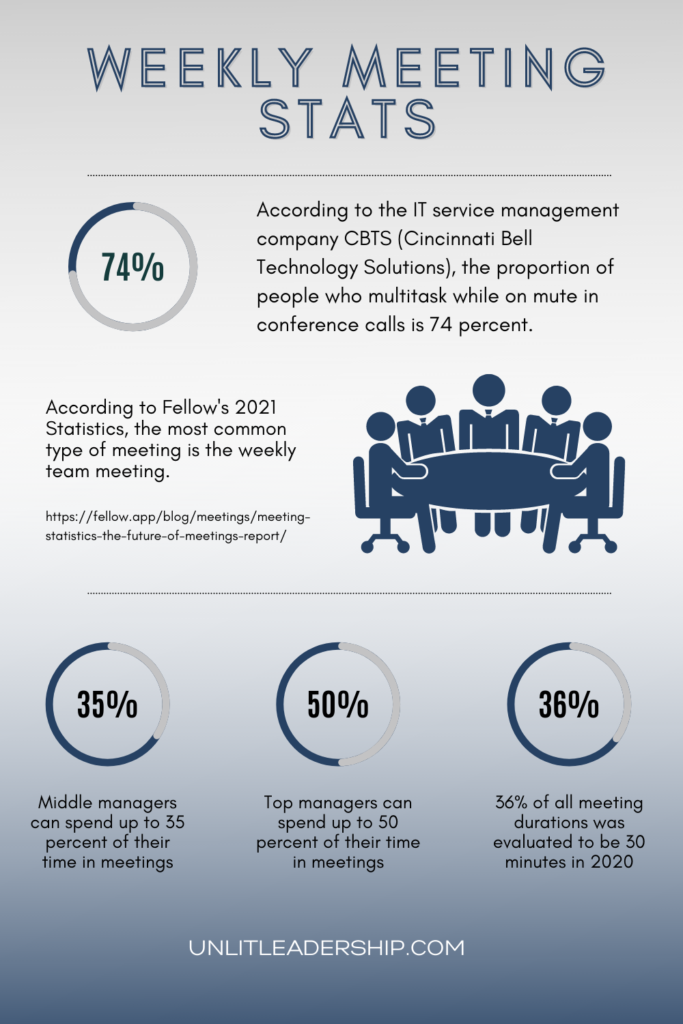For the majority of businesses, teamwork lies at the heart of much of what they do. That teamwork could be a designer and engineer working together to form the best visual representation of a product or it could be a marketer working together with a manager to decide what is the best campaign for the coming season or year.
It’s all very well accepting that teamwork plays a major part in progress and success but how does that actually work in real life? Do teams always need to meet in face-to-face meetings? Or can online meetings work just as well? Knowing how to hold effective team meetings is an essential factor in streamlining workflows, allowing for brainstorming, and team collaboration.
So, how do you organise a good team meeting? What part does technology such as video conferencing tools like Zoom or Microsoft Teams Meeting play? As a manager or team leader, what is the best way to ensure you hold productive meetings?
What Are Team Meetings For?
You could say that the most basic purpose of a team meeting is to ensure that all team members are singing from the same song sheet, that they know what their purpose is (within a project or workflow), and that information is shared where needed and equally. Team meetings are also a place where discussion can flourish and ideas can be shared.
Such meetings can also clear up confusion and provide clarity so that all staff are focused on both their own tasks and the common goal of the team. The direction of any specific meeting will be directed by the meeting agenda, which will list relevant topics for discussion (usually running in order of priority).
6 Types of Team Meetings

How you will run your meeting will depend on the type of meeting, or what your goal is of calling any team meeting.
These are one of the m
1. Status Updates
ost regularly held types of team meetings. They can be task or project-specific and the primary goal is to receive updates from the various team members (or even different teams) who are all working on the same work project or towards a common objective. The meeting will focus on progress to date, any challenges to be met, and what the next steps are.
2. Decision Making
One thing that may be common to most types of meetings is decision-making. When you have multiple meeting participants working towards the same goal gathered together (or in a virtual meeting), then you have the perfect opportunity to make decisions. That process should start with information sharing and should also involve all relevant stakeholders in the workflow process.
3. Information Sharing
Without information, neither your teams nor your organisation can function properly. Info sharing meetings can include presentations from any stakeholder who needs to update other team members or teams. However, this type of meeting could also cover training sessions or external organisations presenting info or product demos. Although some of this info could be shared by email or messaging, an in-person meeting allows for discussion and/or Q&A sessions.
4. Problem Solving
Problems happen, they are unavoidable in any business. Problems can be anything from issues with external suppliers to logistical issues, or from personality clashes to market pricing. Having a problem-solving meeting, or having it as a primary agenda item, means you can have an open discussion to identify strategies to solve the problem with input from all relevant team members.
5. Design and innovation
Innovative ideas can drive your business forward. This type of meeting can cover anything from concepts for a new product to a more efficient way of doing an existing process. While often less formal in nature, you can still produce action items that benefit your organisation. These meetings can also produce items that people will go and work on then bring back to the next meeting.
6. Team building
It could be said that any sort of team meeting seeks to encourage teamwork and collaboration. You want your team members to discuss, debate, and work together. However, setting aside dedicated sessions for team building can be hugely beneficial. This type of meeting does not have to take place in a meeting room but could be a day (or even a weekend) spent outside the company location.
How To Plan A Team Meeting

1. Clarify your purpose
Even meetings with multiple agenda items should have some sort of clear purpose. For example, all the items discussed may have the common goal of improving the marketing of a specific product. When you plan or schedule a meeting, ensure that you have that clarity of purpose outlined in your plans and detailed in your team meeting agenda items.
2. Create and tailor the agenda
When you plan your meeting, create an agenda that reflects the overriding purpose of the meeting and that will meet all your goals. This means identifying and including all the topics that will get you from A to B. The agenda should also recognise the priority of each topic; the most important topics should come at the start of any meeting, the least important at the end.
3. Collaborate with stakeholders
You may be in a management role but that doesn’t mean you should plan any meeting in a vacuum. If you expect collaboration during a meeting, then there should be some collaboration in planning that meeting. Seeking the team needs, opinions, and subjects important to other teams or staff is a crucial building block when planning almost any sort of meeting.
4. Invite the right attendees
Meetings are like dinner parties, you want to invite the right people. While some meetings may need to involve company-wide stakeholders, others may be specialised. Again, think about the goals and purpose of the meeting and look at who is (or will be) involved in realising those goals. There is no point in inviting attendees who have no relevance to the topics being discussed.
5. Create room for discussion
Meetings may often be time-limited. However, it is crucial that you plan for time that allows open discussion on the topics on the agenda. If decisions are rushed without enough discussion, then you may find that mistakes arise and you need to plan a follow-up meeting to rectify them. Where possible, allow some flexibility time-wise so that there is the opportunity for all required discussions.
6. Set schedule
Scheduling your meetings is another crucial step when planning them. Is it a regular team meeting? Then you should schedule the same meeting time every week or month so that team members can always have it in their diaries. If an ad hoc meeting, you should consult with all the relevant stakeholders to see what times or days are most convenient and have meeting starts scheduled to suit as many people as possible.
7. Expect tech to fail and have a backup plan
There is nothing worse than being in the middle of a Powerpoint presentation when your laptop (or other tech) fails you. Have some sort of backup plan on the subs bench in case you experience a tech failure. That could include things such as having printouts of your presentation or docs, using a whiteboard to illustrate your data or other alternatives.
5 Tips For A Successful Team Meeting

1. Put collaboration first
Think about what information is going to be shared in the meeting. Could it be shared in advance via tools such as Slack or Outlook? By sharing prior to the meeting, it allows more time during the actual meeting for discussion and collaboration. This can make it easier for the meeting to come to actionable decisions there and then.
2. Ask for input from your team
As mentioned earlier, it is crucial that you do not plan a meeting alone. Getting input from the various stakeholders who will attend the meeting is important to how successful it will be. They may have an innovative idea they want to discuss, or a problem that has arisen, or a gap in training they have identified. Whatever the reason, getting suggestions from them is crucial to success.
3. Give everyone a chance to speak
You never know who on your team might have the next great idea. Or indeed, who might have spotted a problem everyone has missed. It is essential that everyone has a chance to contribute to the meeting so should ask in advance if anyone wants to speak or add an item to the agenda. You can then allocate time to those people during the meeting as well as asking each person in turn if they have any final thoughts at the end of the meeting.
4. Pose questions that encourage discussion
If you only pose closed questions, then discussion will be non-existent and you will likely achieve little. You want to ask questions that encourage discussion and debate and that will often lead to actionable decisions. Open questions can elicit a multitude of beneficial responses from your team members and can also encourage further collaboration.
5. Follow-up on action items
There is little point in making decisions during a meeting if those decisions are not followed through on. If actions are agreed during a meeting, take meeting notes and identify the person or team responsible for carrying the action out and follow up with them in the days after the meeting to ensure action has begun. Having this in place can help make sure that your meetings produce tangible results.
Conclusion

Team meetings are a crucial part of how your business operates. With many people working remotely, these do not have to be in person meetings. With great tools such as RingCentral’s video conference options, you can have a virtual workspace to discuss and collaborate, especially when it offers easy integrations and options such as screen sharing.
With the ability to use the RingCentral mobile app on ios or android, you have access to the functionality needed to have efficient meetings in real-time. Even with a new team, you can easily share meeting details and improve efficiency and enhance collaboration. Whether holding in-person or virtual meetings, creating or following a template can also make it easier to plan future meetings.
Originally published 10 Mar, 2022






